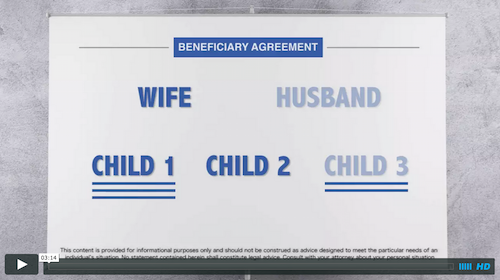
When it comes to planning your estate, you might be wondering whether you should use a will or a trust (or both).
Understanding the similarities and the differences between these two important documents may help you decide which strategy is better for you.
What is a will?
A will is a legal document that lets you direct how your property will be dispersed (among other things) when you die.
It becomes effective only after your death. It also allows you to name an estate executor as the legal representative who will carry out your wishes.
In many states, your will is the only legal way you can name a guardian for your minor children. Without a will, your property will be distributed according to the intestacy laws of your state.
Keep in mind that wills and trusts are legal documents generally governed by state law, which may differ from one state to the next.
What is a trust?
A trust document establishes a legal relationship in which you, the grantor or trustor, set up the trust, which holds property managed by a trustee for the benefit of another, the beneficiary.
A revocable living trust is the type of trust most often used as part of a basic estate plan. “Revocable” means that you can make changes to the trust or even end (revoke) it at any time.
For example, you may want to remove certain property from the trust or change the beneficiaries. Or you may decide not to use the trust anymore because it no longer meets your needs.
A living trust is created while you’re living and takes effect immediately. You may transfer title or “ownership” of assets, such as a house, boat, automobile, jewelry, or investments, to the trust. You can add assets to the trust and remove assets thereafter.
How do they compare?
While both a will and a revocable living trust enable you to direct the distribution of your assets and property to your beneficiaries at your death, there are several differences between these documents.
Here are a few important ones.
- A will generally requires probate, which is a public process that may be time-consuming and expensive. A trust may avoid the probate process.
- In order to exclude assets from probate, you must transfer them to your revocable trust while you’re living, which may be a costly, complicated, and tedious process.
- Unlike a will, a trust may be used to manage your financial affairs if you become incapacitated.
- If you own real estate or hold property in more than one state, your will would have to be filed for probate in each state where you own property or assets. Generally, this is not necessary with a revocable living trust.
- A trust can be used to manage and administer assets you leave to minor children or dependents after your death.
- In a will, you can name a guardian for minor children or dependents, which you cannot do with a trust.
Which is appropriate for you?
The decision isn’t necessarily an “either/or” situation. Even if you decide to use a living trust, you should also create a will to name an executor, name guardians for minor children, and provide for the distribution of any property that doesn’t end up in your trust.
There are costs and expenses associated with the creation and ongoing maintenance of these legal instruments.
Whether you incorporate a trust as part of your estate plan depends on a number of factors. Does your state offer an informal probate, which may be an expedited, less expensive process available for smaller estates?
Generally, if you want your estate to pass privately, with little delay or oversight from a probate court, including a revocable living trust as part of your estate plan may be the answer.
Important Disclosure



